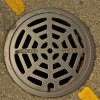Echo
Photo Friday: Re-reversing the Chicago River
|
[cincopa AIHA8J7VAKQ9]
(Photos by Lloyd DeGrane, Alliance for the Great Lakes)
The course of the Chicago River, reversed over a century ago by the Chicago Sanitary and Ship Canal to prevent the flow of waste water into Lake Michigan, was re-reversed April 18 to alleviate flooding in the city in the wake of serious storm conditions, according to an Associated Press report. These photos show dark stormwater and untreated waste water flowing into the lighter waters of Lake Michigan, according to the Chicagoist, a popular news blog for the Chicago area. Echo has previously reported on the increasing frequency of urban flooding problems in Chicago and the Midwest.







